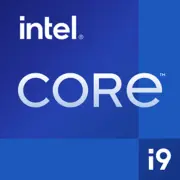Intel Core i9-11950H

인텔 코어 i9-11950H: 전문가와 게이머를 위한 강력한 프로세서. 2025년 Practical Review
소개: 왜 2025년에도 인텔 코어 i9-11950H가 여전히 유효한가?
새로운 세대의 프로세서가 출시되었음에도 불구하고 인텔 코어 i9-11950H는 성능과 휴대성 간의 균형을 찾는 이들에게 여전히 수요가 많은 솔루션으로 남아 있습니다. 2021년에 출시된 이 칩은 현재도 프리미엄 노트북과 워크스테이션에서 사용되고 있습니다. 2025년에 대체 어떤 사용자에게 인텔 코어 i9-11950H가 적합한지, 그리고 이 프로세서가 어떤 작업을 수행할 수 있는지를 알아보겠습니다.
아키텍처 및 제조 공정: 10nm SuperFin 및 8코어
인텔 코어 i9-11950H는 Tiger Lake-H 아키텍처와 혁신적인 10나노미터 SuperFin 공정으로 제작되었습니다. 이 기술은 인텔에게 전력을 줄이고 트랜지스터 구조 개선을 통해 주파수를 높일 수 있는 기회를 제공했습니다.
주요 사양:
- 코어 및 스레드: 8 코어, 16 스레드.
- 주파수: 기본 2.6 GHz, 터보 부스트 최대 5.0 GHz (단일 코어).
- 캐시: L3 — 24MB.
- 통합 그래픽: 인텔 UHD 그래픽스 (11세대, 32 EU, 최대 1.45 GHz 주파수).
아키텍처의 특징:
- PCIe 4.0 지원: 최대 20라인 지원, 빠른 SSD와 외부 GPU에 필수적입니다.
- 썬더볼트 4: 최대 4개의 4K 모니터 또는 40Gbps 속도의 외장 스토리지 연결 가능.
- AI 가속: 인텔 DL Boost 명령어는 사진 및 비디오 처리 애플리케이션에서 신경망 작업을 최적화합니다.
iGPU: 통합된 UHD 그래픽은 사무 작업과 경량 게임에 적합하며 (예를 들어 중간 설정의 CS:GO에서는 40-50 FPS 제공), 고급 게임을 위해서는 별도의 그래픽 카드가 필요합니다.
전력 소모 및 TDP: 35W와 그 조건들
프로세서의 공칭 TDP는 35W이지만, 실제로는 터보 부스트 모드에서 65-80W까지 소비할 수 있습니다. 이는 두 가지 주요 요소를 만듭니다:
1. 열 방출: 안정적인 작동을 위해서는 효과적인 냉각 시스템이 필요합니다. 슬림한 울트라북에서는 과열로 인해 주파수가 낮아질 수 있습니다.
2. 성능 균형: 향상된 냉각 시스템이 장착된 노트북(예: MSI GE76 Raider)에서는 프로세서의 성능을 최대한 발휘하지만, 장치의 무게와 두께가 증가합니다.
성능: 사무 작업에서 게임까지
사무작업 및 멀티미디어:
- 50개 이상의 탭을 가진 Chrome + Zoom + Excel: 16개의 스레드 덕분에 프로세서는 지연 없이 작업을 수행합니다.
- DaVinci Resolve에서 4K 편집: 10분짜리 영상 렌더링에 약 12분 소요 (비교: 애플 M1 Pro — 약 9분).
게임:
- Cyberpunk 2077 (1080p, 낮은 설정) + NVIDIA RTX 3060: 55-60 FPS.
- 게임에서의 터보 부스트: 주파수가 4.2-4.5 GHz 수준으로 유지되지만, 30-40분 후에는 컴팩트한 케이스에서 스로틀링이 발생합니다.
터보 모드: 장점과 단점
- 최대 성능: 단기 작업(예: 코드 컴파일)에서 25-30%의 성능 향상.
- 과열 위험: 증기/열관이 없는 노트북(예: Dell XPS 15)에서는 터보 부스트가 거의 활성화되지 않습니다.
사용 시나리오: 누구에게 i9-11950H가 필요한가?
1. 전문가: 비디오 편집자, 프로그래머, CAD 엔지니어.
2. 게이머: 고급 그래픽과 함께 게임하기 위한 RTX 3060 이상을 필요로 하는 게이머.
3. 모바일 사용자: 컴팩트한 폼 팩터에서 성능이 필요한 사용자(예: Razer Blade 15).
예시: i9-11950H 기반의 노트북 가격이 $1500-1800 (2025년 기준)인 것은 인텔 코어 i7-13700H가 장착된 고비용 모델의 대안이 될 수 있습니다.
배터리 수명: 얼마나 지속될까?
- 평균 작동 시간: 중간 부하에서 5-7시간 (웹 서핑, 사무 작업).
- 전력 절약 기술:
- 인텔 스피드 시프트: 부하에 따라 주파수를 동적으로 변경합니다.
- Adaptix Thermal Framework: 소음을 최소화하기 위해 팬을 제어합니다.
팁: 배터리 수명을 늘리기 위해 전원 설정에서 터보 부스트를 비활성화하면 1-2시간의 추가 작동 시간이 추가됩니다.
경쟁사와 비교: AMD, 애플 및 이전 세대
AMD 라이젠 9 5900HX (2021년):
- 장점: 멀티스레드 성능이 우수합니다 (+15% Cinebench R23에서).
- 단점: 단일 스레드 작업에서는 약간 열세 (-10% Geekbench 6에서).
애플 M1 Pro (2021년):
- 장점: 최대 12시간의 배터리 수명, 저온 작동.
- 단점: Windows 애플리케이션과 AAA 게임에 적합하지 않음.
인텔 코어 i7-11800H (2021년):
- 캐시가 적어 멀티스레드 시나리오에서 12-18% 뒤처집니다.
프로세서의 장단점
강점:
- 높은 단일 스레드 성능.
- 썬더볼트 4 및 PCIe 4.0 지원.
- 게임과 작업을 동시에 수행하기에 최적입니다.
약점:
- 냉각을 요구합니다.
- 통합 그래픽은 AMD 라데온 680M에 비해 열세입니다.
- 2025년에는 기본 작업(예: 사무 작업)에 대해 과도한 선택으로 보일 수 있습니다.
노트북 선택 권장 사항
1. 장치 유형:
- 게이밍 노트북: ASUS ROG Strix Scar 15 (가격: $1600부터).
- 워크스테이션: Lenovo ThinkPad P1 (가격: $1900부터).
- 울트라북: HP Spectre x360 (가격: $1400부터, 하지만 스로틀링 발생 가능).
2. 주의할 점:
- 냉각 시스템: 최소 2개의 팬과 4개의 열관이 필요합니다.
- 배터리: 80W·h 이상은 6시간 이상의 자율성을 제공합니다.
- 디스플레이: 전문적인 작업을 위해서는 색상 범위가 100% sRGB인 4K 해상도가 필요합니다.
결론: 2025년에 i9-11950H가 장착된 노트북을 구매해야 할까?
이 프로세서는 다음과 같은 사용자에게 적합합니다:
- 가격과 성능의 균형을 찾는 이들: 중고 시장에서 i9-11950H 노트북은 최신 칩이 장착된 노트북보다 20-30% 저렴합니다.
- 무거운 애플리케이션으로 작업하는 이들: 예를 들어, AutoCAD 또는 Premiere Pro.
- 다재다능성을 중시하는 이들: 게임과 작업을 모두 수행할 수 있는 가능성.
주요 이점: 멀티태스킹을 위한 강력한 성능, 최신 인터페이스 지원, 2025년에 상대적으로 접근 가능한 가격. 그러나 배터리 수명과 조용한 작동이 우선이라면 애플 실리콘이나 AMD 라이젠 7000을 탑재한 노트북을 고려해보세요.
기초적인
CPU 사양
메모리 사양
GPU 사양
여러 가지 잡다한
벤치마크
다른 CPU와 비교
소셜 미디어에서 공유하기
또는 링크로 소개하기
<a href="https://cputronic.com/ko/cpu/intel-core-i9-11950h" target="_blank">Intel Core i9-11950H</a>